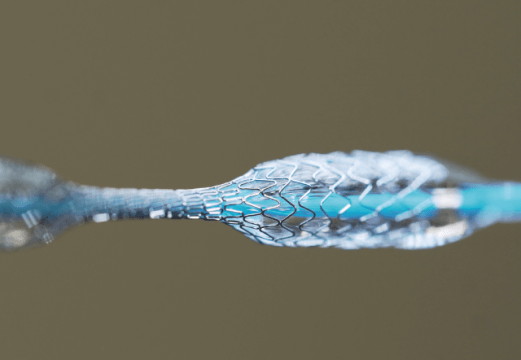Original title: Pulmonary artery denervation to treat pulmonary arterial hypertension: a single center, prospective, first-in-man PADN-1 study. Reference: Shao-Liang Chen et al. J Am Coll Cardiol. Article in press.
Idiopathic pulmonary hypertension is characterized by elevated mean pressure and resistance due to an imbalance between local vasodilator and vasoconstrictor added to the vascular wall renovation. Based on animal findings this study was designed for the first time in humans to test the safety and efficacy of pulmonary denervation in patients with idiopathic pulmonary hypertension (mean pulmonary ≥ 25 mmHg) without responding to current optimal medical treatment.
A total of 22 patients were eligible for the study of which 8 refused to sign the informed consent and were assigned to the control group. Procedure was performed using a specially designed catheter 7.5 Fr (PADN™, patent application in progress) having a circular distal end of 5 Fr with 10 electrodes for ablation, after angiography to identify pulmonary artery bifurcation and artery diameter.
Immediately after ablation all medication was discontinued (diuretics, sildenafil, bosentan, beraprost and digoxin) except anticoagulation. Procedure was successful (average pressure reduction ≥ 10 mmHg and absence of complications) in all but one patient in which the process was suspended in the first application due intolerable chest pain. Immediately after denervation both, systolic pulmonary as well as mean pressure decreased as the average baseline [86 ± 8 mmHg to 72 ± 5 mm Hg (p <0.01) and of 55 ± 5 mm Hg to 39 ± 7 mmHg (p <0.01), respectively]. These decreases were maintained at 3-month follow-up. Concomitantly there was a significant increase in cardiac output (from 2.0 ± 0.2 L/min.m2 to 2.8 ± 0.3 L/min.m2, p <0.001). At 3 months walking test of 6 minutes also improved from baseline of 324 ± 21 meters to 491 ± 38 meters (p = 0.004) associated with an improvement in functional class and Borg scale. No change was observed in the control group continued with premedication. None of the patients presented perforation, dissection, aneurysm or acute thrombosis of the pulmonary branches.
Conclusion:
This abstract reports the effect of lung denervation in humans for the first time, in patients with idiopathic pulmonary hypertension, where improvement was observed in both hemodynamic and functional capacity. Further studies are needed to confirm the effect of lung denervation.
Editorial Comment:
These results are encouraging, especially considering that patients who underwent denervation stop receiving all prescriptions except anticoagulation, showing the “pure” effect of procedure on cardiac function, pressures and functional capacity. We also observed a significant decrease in the level of NT-BNP which is perhaps the most sensitive marker in blood pressure in the right ventricle.
SOLACI.ORG





